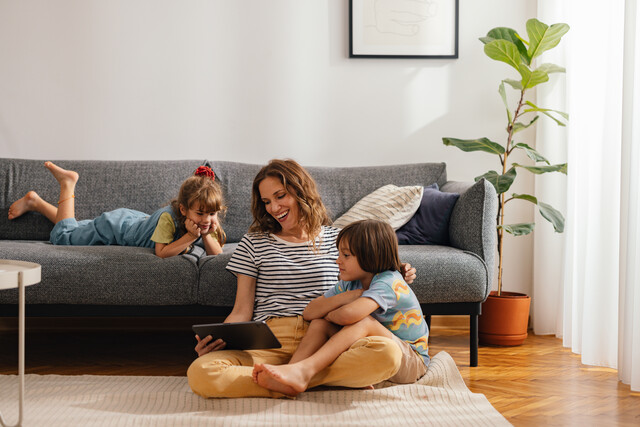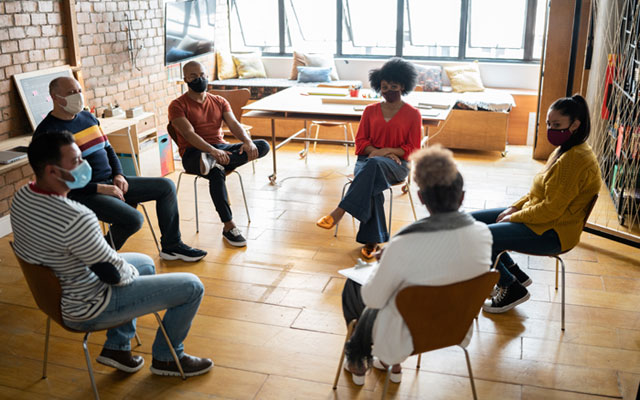In today's world, children have almost constant access to multiple sources of technology and online interaction wherever they go. This can be daunting for parents especially at the current societal moment when most new parents are of the millennial generation and did not grow up with this same type of access to technology in early childhood. In this article, we will discuss how technology can affect the physical, mental, and emotional safety of children, responsible use of technology for the whole family, and step-by-step information on how to set boundaries with technology.
Impact of Technology
Technology can be a helpful learning tool but on its own, technology has significant limitations in the positive benefits it can provide. For example, computer-based software for academic skills like phonics and decoding can be helpful in teaching children how to read when paired with individualized and group instruction from a teacher or parent in the case of a homeschooling situation. On its own, this computer-based software cannot correct for error patterns or individualize practice opportunities based on unique needs of the child.
As children get older, screen time begins to include opportunities to interact with the world at large via chat rooms or chat apps, social media, and other forums for learning about topics of interest through reading content written by other internet users. Since almost anyone with a device that is connected to the internet can publish content online without specific guidelines or boundaries for that content, there is virtually no limit to the type of content children and teens may be exposed to during their time on a connected device. This can impact the child's safety in the following three ways.
1. physical safety - Too much screen time can lead to an increased risk for certain disorders to emerge later in childhood related to attention and hyperactivity and childhood obesity due to spending more time in a sedentary state watching a screen than engaged in some kind of physical activity. Too much screen time or access to technology can slow cognitive processes and development. It can also negatively impact sleep and lead to sleeplessness or difficulty falling asleep at bedtime. Cyber safety is also included in this category. When a child is online, they may not know how to keep certain information confidential like their full name, address, and the location of their school. If a dubious character gains access to information that can allow them to determine the location of a vulnerable child and this dubious character is prone to predatory behavior, they may track the child's location and pursue them. This can also happen when a person online pretends to be a harmless character like a child molester impersonating a middle school student and lures children into going to a meeting point after school hours and outside trusted adult supervision. Typically in these types of situations, the child will realize quickly that they have made a mistake. But at this point, if there are no other adults around, it may be too late for the child to return to a safe place before something happens.
2. mental safety - A child's brain is constantly taking in information from myriad sources to develop an understanding of social processes and how the world works. This worldview can be impacted when a significant portion of information sources comes from online technology and screen time. Because these sources of information move at a different pace than real-time events and have different rules associated with concepts like cause and effect, the very young child's brain may start to map this pace and these conceptual rules back onto interactions with their physical environment and face-to-face relationships.
Responsible Use of Technology
For the reasons discussed above and to ensure that children are actively learning from their immediate physical and social environments, screen time should be limited and supervised. Responsibility with technology is something that parents and older children in the home can model for younger children. It's important to keep in mind that what may be appropriate for parents and teens whose cognitive development has reached a certain level will not be appropriate for infants and younger children. Currently, recommendations are that children under two years of age be restricted from screens completely. Children over two should have their screen time limited to a maximum of two hours per day. However, this screen time is not active learning time as discussed above and does not contribute on its own to the child's development cognitively, socially, academically, communicatively, and obviously, physically. In addition to quantity limitations, it is also recommended that parents maintain an active role in curating screen time content for their children. In earlier childhood, this looks like utilizing parental controls with technology to restrict access to certain apps, as well as restricting content within programs that provide access to a wide variety of streaming television shows, movies, and games. For older children, this task becomes more complex as the parent will be trying to keep pace with an online environment that is constantly changing through dynamic search engine results and an ever-evolving community within social media and chat apps or chat rooms. At this age, the parent will need to take a more holistic approach to openly discussing self-management strategies for content viewing and answering questions from their children about confusing or concerning content that may have been viewed, as well as maintaining use of parental controls when possible.
The first step to creating a safe and healthy technology environment in the home for children is to establish expectations for the family unit as a whole and then adhere to those expectations consistently over time. For example, the family may engage in planned family movie nights once a week where all family members are experiencing extended screen time in viewing the selected movie. Parents can set expectations for this time by coaching their children in the days leading up to the movie, maybe saying, "I'm so excited to watch a movie together and then be able to talk about it at breakfast on Saturday," limiting other screen time during the day of the family movie night to zero, and carefully monitoring and selecting movies based on what is appropriate for the youngest person in the family. For many parents, the task of previewing all content before showing it to their children can be daunting and unrealistic. Parents can consider using a resource like the Common Sense Media website to help them make decisions in advance about the age appropriateness of content, as well as the types of conversations they should be prepared to have with their children after viewing. When utilizing resources like this, parents should be vocal about the process of decision making in order to model how to successfully and safely curate content for their children, so that their children can be better prepared to someday make informed decisions for themselves utilizing processes they have already observed their parents use.
Another example is for the parents and older children in the home to demonstrate active healthy choices regarding screen time and technology. This may look like putting smartphones away during evenings throughout the week and for longer periods of time or even whole days on the weekends. This may look like keeping the television off most of the time in the home rather than having it on as background noise. Streaming music, podcasts, or audiobooks are all great alternatives for background noise if needed.
For children who are older and beginning to engage in more independent activities like after school sports or other enrichment activities and play dates with an expanded peer group, parents may feel like they need their child to have a phone to be able to reach them and check up on their safety. In this type of situation, parents can consider an intermediate step in the form of a child safety watch that allows the child to text back and forth with a limited number of parents and trusted adults and also allows for location tracking via GPS if this becomes needed. This also helps the child to build independent skills for managing technology in a constructive, simple way before launching into the overwhelmingly vast access to the online world that smart phones provide.
For computer and tablet-based learning, parents should still be limiting overall time spent on the screen and integrating other practice opportunities for the skills in question. For example, if a child is learning new phonemes via a decoding app, the parent can model finding those phonemes in familiar storybooks and reading them aloud, taking turns with the child and helping them to generalize the skills they've learned in the online program. For an older child or a teen, online classes will often involve some type of essay response to questions and written work of other students in the class. Parents can build on this type of written social skill building by engaging in discussion around the topics being taught in the class and demonstrating skills for oral debate and verbal rhetoric, as in the "Socratic seminar" method, and reflecting on how this learning medium is similar to and different from an online class structure. By involving themselves in the child's or teen's online educational experience, the parents are more likely to gain insight on how their children are approaching their overall relationship to technology and can be better poised to help problem solve when safety situations with recreational social media may arise.
























